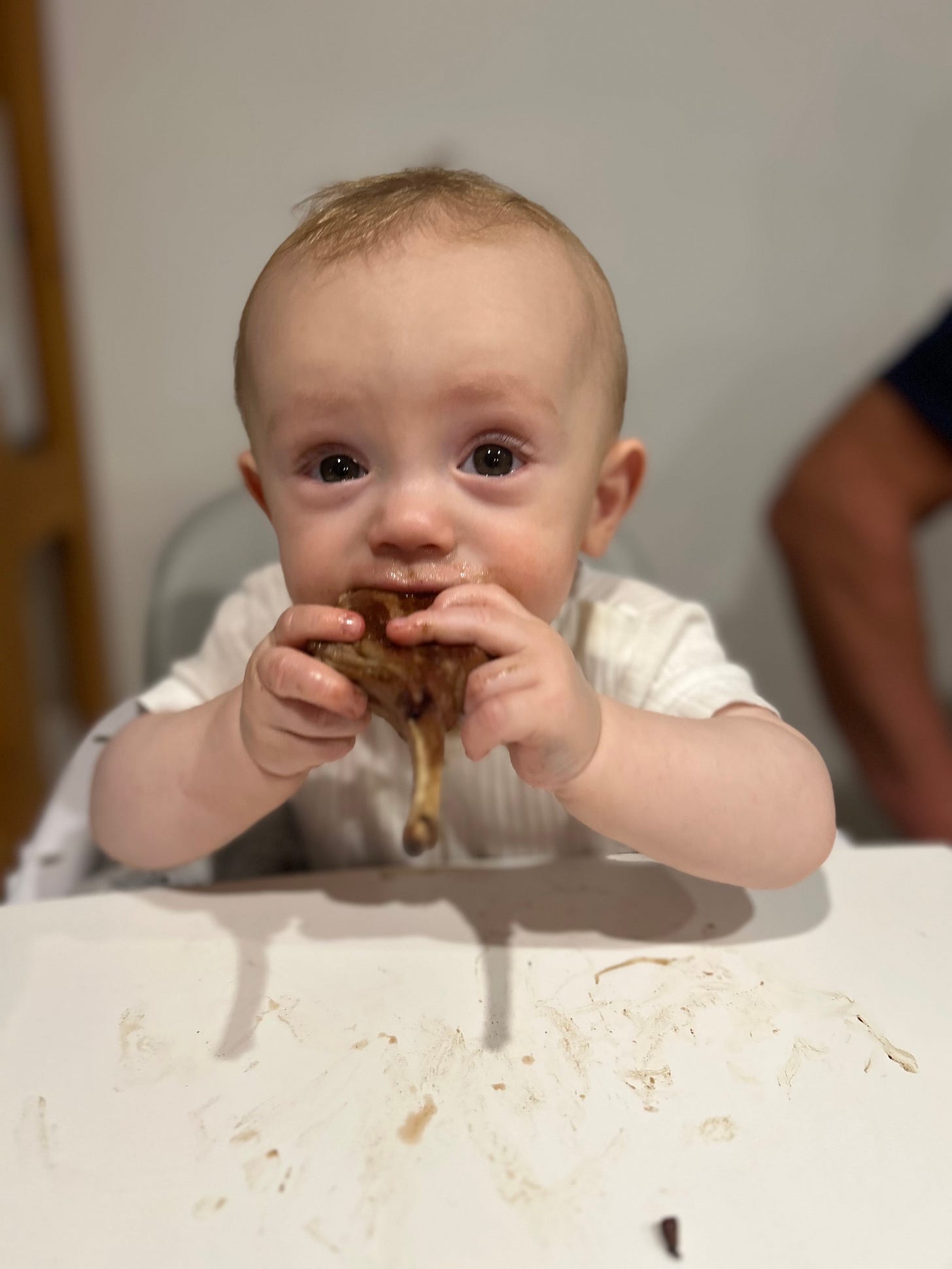A guide to starting solids with your little one, part 2
When do I introduce solids and how does it fit into our routine?
In Part 1 I went through all of the signs that your tiny human is getting ready to start solids. Now that the time has come, let’s talk about when is the best time to introduce and try out that very first meal. I remember finding this part a bit tricky with my first baby, as it already felt like every minute of the day was filled. But, as they slowly get older, their wake window starts to get a bit longer, and the golden window for introducing a meal opens up.
Before working out when is the right time, I firstly want to delve into how important it is for you (parent) to feel comfortable and relaxed. Research has shown that little ones as young as one month old sense when a parent is angry and/or depressed and are affected by their parents mood. Very interestingly, studies are being done on the impacts of botox in parents, and the repercussions of how babies read their emotions (or lack of). Regardless of research, I think we all know that feeling of when you’re worked up and feeling stress, your little one (or even your partner) is often feeling a bit agitated too. So if our goal is to make meal time a relaxed, enjoyable time, we need to make sure the environment is set for this. This starts with relaxed and comfortable parents. Given this, don’t pick a time to introduce solids when you’re feeling stressed because you don’t have time or have other jobs that need to be done, or after a shocker of a morning. Wait until you’re feeling good yourself (which might be after a coffee or shower - whatever helps you feel relaxed in what can be an already stressful time).
If you (parent) are feeling nervous about introducing solids, work out the root of this stress. Understandably, you might find the idea of an allergic reaction or chance of choking stressful. I totally get that! If this is the case, prepare yourself and overcome that fear by completing an infant first aid course before introducing solids. This will give you the confidence to know how to deal with these scenarios if/when they arise. For this reason as well, I always recommend introducing solids (and new allergens), during the day so that you can watch your little one as it can take up to 3 hours for allergic reactions to appear. It can also be reassuring knowing that medical support is open and easily accessible during standard work hours, compared with navigating after hour medical care. Keep your phone close by as well, so you can call for help if needed.
In terms of introducing solids before or after a milk feed, understanding your baby and their personality can help you to work this out. If you have a relaxed, thriving baby, you might like to start before their next milk feed when you know they’ll be hungrier and eager to try food. If you find your baby can be a bit unsettled, you might like to do a milk feed first to help settle them, and then try solids in a more relaxed environment. Ideally you want to allow 30-60 minutes after/before a milk feed to introduce solids, as we don’t want to impact on their milk intake (as milk is still the main priority). The more you introduce solids and test different times, the better you’ll get at finding that sweet spot. Overall, it’s important to make sure baby is happy and relaxed at meal time.
How might this fit into your routine?
Breakfast: Breast/bottle feed
Morning tea: Breast/bottle feed & solid meal
Lunch: Breast/bottle feed
Afternoon tea: Breast/bottle feed
Dinner/before bed:Breast/bottle feed
In the next post, Part 3, we will delve into the different feeding types (baby led weaning vs puree) and how they stack up. Subscribe to stay tuned!



